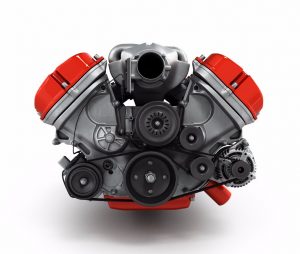
The engines are similar in only one sense. Both forms – diesel and gas – are internal combustion engines. They are both are designed to convert the chemical energy that is available to it into mechanical energy. This mechanical energy will, in turn, move the pistons up and down inside the cylinders of the engine. The pistons connect to a crankshaft, which uses the up and down motion of the pistons to create the rotary motion of the wheels themselves. While each engine is a combustion engine, how they get to the final portion of their process is very different.
Each engine has four main strokes it goes through, according to NCH. It is within each of these strokes that determine if the engine is a standard engine or diesel. These strokes help to spark the combustion of each engine in a way that is compatible with the fuel used.
The process for gasoline, for example, is fairly rudimentary when it comes to the mechanics about the engine.
- Intake stroke
- Fuel mixed with air
- Compression stroke
- Piston goes up
- Mixture of fuel and air is compressed
- Ignition stroke
- Fuel/air gets ignited through the use of a spark plug
- Exhaust stroke
- Piston goes up
- Pushes exhaust through the exhaust valve
The process for diesel, however, changes as the fuel never mixes with the air to create a combustion:
- Intake stroke
- Intake valve opens
- Air goes in
- Piston goes down
- Compression stroke
- Piston goes up
- Air is compressed (heated more than 540 degrees Celsius)
- Combustion stroke
- Fuel gets injected at the right time
- Ignition
- Piston goes down, then up
- Exhaust
- Pushes exhaust through the exhaust valve
A diesel engine has no spark plug, and they need high compression ratios to generate the high temperatures required for fuel autoignition. The higher the cetane number, the better the ignition will be for the diesel engines. When it comes to compression, the rates are also higher within diesel engines. Compression in a diesel engine is about 14:1 to 25:1. With a gasoline engine, the rates are about 8:1 to 12:1. Gasoline engines use lower compression ratios to avoid fuel autoignition, also known as engine knock. Higher compression ratios lead to higher thermal efficiencies and better engine fuel economies.
Visit Gurney’s Automotive for Quality Gas & Diesel Auto Repair in Milford!
It is important when you look for auto repair in Milford that you consider which engine you have. Those who service diesel will state that they service diesel as it is entirely up to the owners and the skills of the mechanics.


